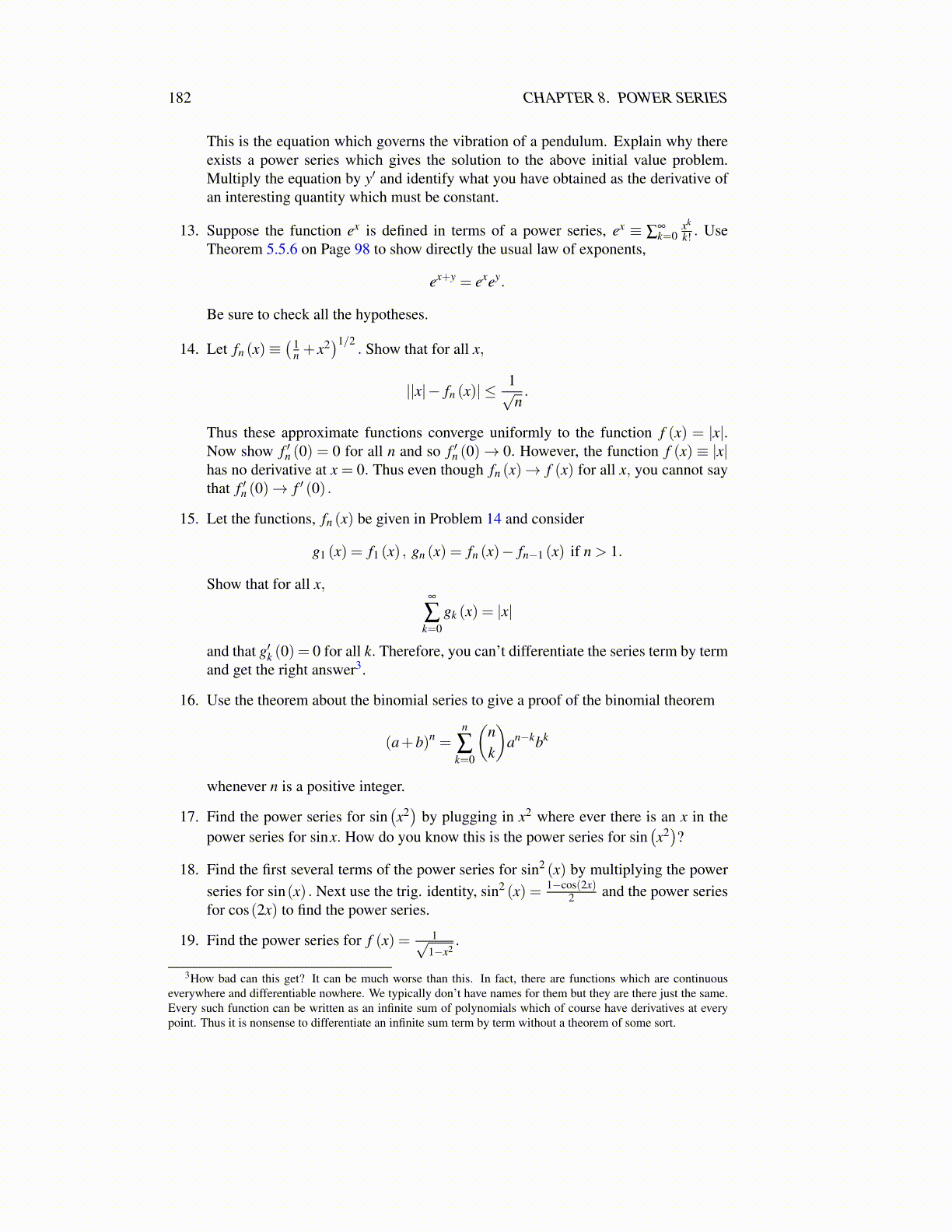
182 CHAPTER 8. POWER SERIES
article claims the first completely correct proof was done by Argand in 1806. The shortestproof is found in the theory of complex analysis and is a simple application of Liouville’stheorem or the formula for counting zeros.
Recall De Moivre’s theorem, Problem 15 on Page 170 from trigonometry which is listedhere for convenience.
Theorem 8.12.1 Let r > 0 be given. Then if n is a positive integer,
[r (cos t + isin t)]n = rn (cosnt + isinnt) .
Recall that this theorem is the basis for proving the following corollary from trigonom-etry, also listed here for convenience, see Problem 16 on Page 170.
Corollary 8.12.2 Let z be a non zero complex number and let k be a positive integer.Then there are always exactly k kth roots of z in C.
Lemma 8.12.3 Let ak ∈ C for k = 1, · · · ,n and let p(z)≡ ∑nk=1 akzk. Then p is contin-
uous.
Proof:|azn−awn| ≤ |a| |z−w|
∣∣zn−1 + zn−2w+ · · ·+wn−1∣∣ .Then for |z−w|< 1, the triangle inequality implies |w|< 1+ |z| and so if |z−w|< 1,
|azn−awn| ≤ |a| |z−w|n(1+ |z|)n .
If ε > 0 is given, let
δ < min(
1,ε
|a|n(1+ |z|)n
).
It follows from the above inequality that for |z−w| < δ , |azn−awn| < ε. The function ofthe lemma is just the sum of functions of this sort and so it follows that it is also continuous.In particular, if zk→ z, then p(zk)→ p(z).
Here are some observations about compactness. Recall Theorem 4.8.14 which says thatclosed and bounded sets in C are sequentially compact. A version of this is the followingtheorem called the Weierstrass Bolzano theorem.
Theorem 8.12.4 Let {zk} be a sequence of complex numbers such that |zk| is abounded sequence of real numbers. Then there exists a subsequence
{znk
}and a complex
number z such that limk→∞ znk = z. Sets of the form K ≡ {z ∈ C : |z| ≤ r} are sequentiallycompact.
Proof: The existence of z follows from the observation that
{zk} ⊆ {z ∈ C such that |z| ≤ r}
for some r > 0. This disk just described is sequentially compact by Theorem 4.8.14.
Theorem 8.12.5 Let p(z) be a polynomial of degree n ≥ 1 having complex coeffi-cients. Then there exists z0 such that p(z0) = 0, a zero of the polynomial.